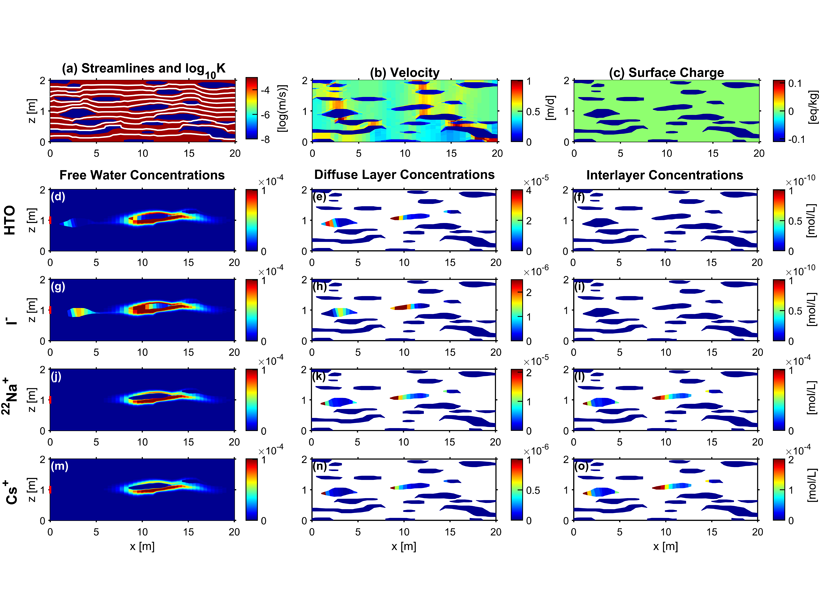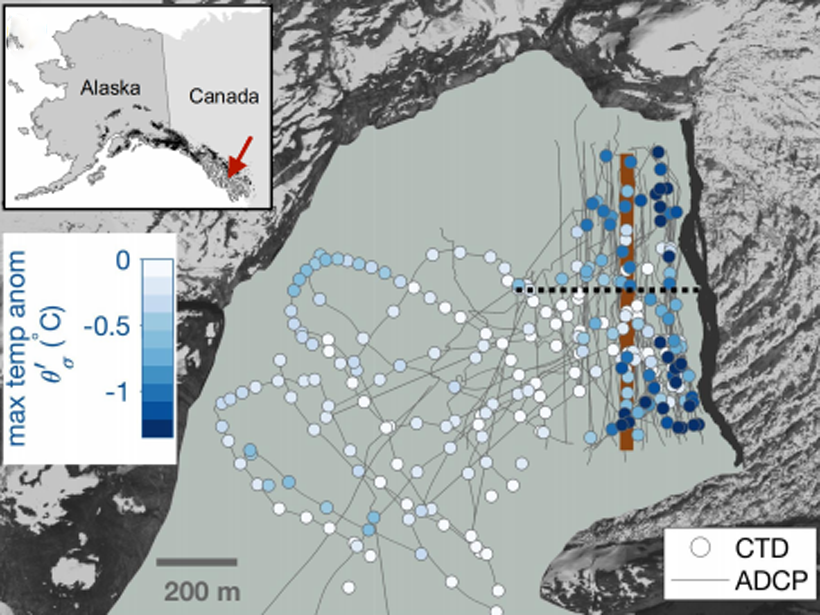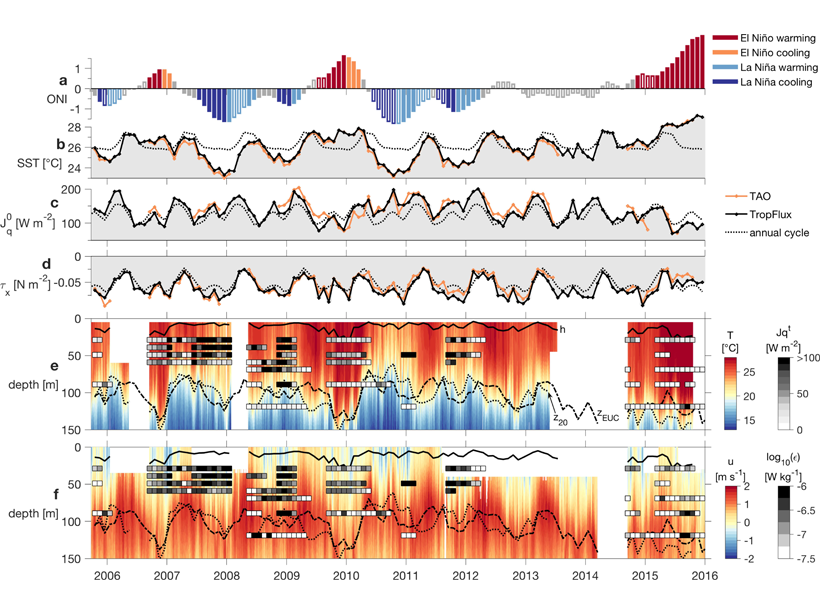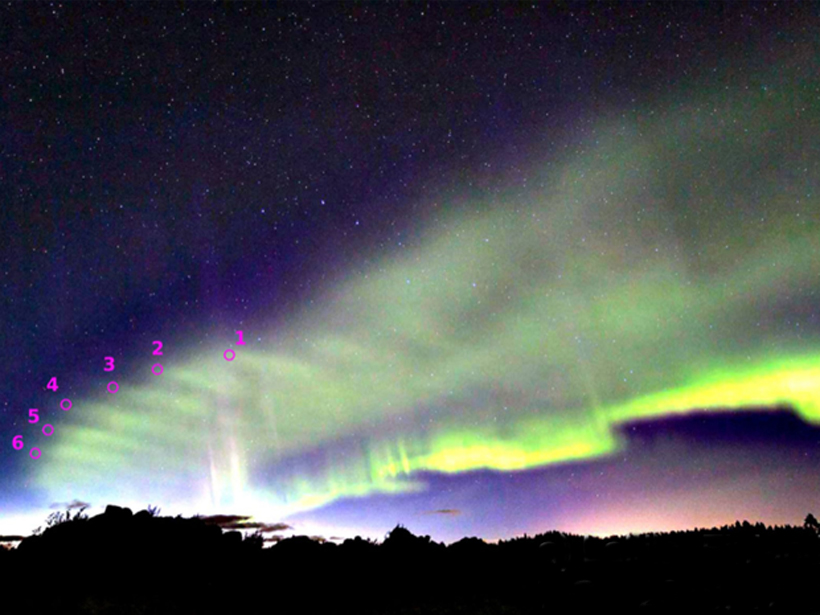Simulation of charged species reactive transport in complex physically and electrostatically heterogeneous porous media is possible with a multiple continua approach coupled to a geochemical code.
Editors’ Highlights
How Does Climate Respond to Different Forcings?
Global temperature responds in the same way to carbon dioxide as it does to methane or aerosol changes if the concept of effective radiative forcing is used to quantify the forcing strength.
First Field Observations of Ocean Melting a Tidewater Glacier
Using autonomous kayaks, researchers carried out measurements of water properties near the terminus of LeConte Glacier and showed that ice/ocean interactions are more complex than thought.
Understanding Tropical Rainfall Projections Under Climate Change
A new mechanism explains changes in the probability distribution of tropical rainfall, which is not expected to change uniformly in a warming climate.
Oceanic Mixing Influences Development of ENSO Cycle
Changes in oceanic turbulence act to regulate the sea surface temperature during the evolution of the El Niño Southern Oscillation cycle.
Emerging Controversy in Madden-Julian Oscillation Prediction
The Quasi-Biennial Oscillation modulates the Madden-Julian Oscillation in observations, but it does not significantly influence prediction skills in a multi-model assessment.
Remotely Monitoring Groundwater Using Standard Techniques
Novel use of standard, single-station seismological techniques can be used to remotely monitor aquifer systems.
Repeating Famous Hillslope Experiment Provides New Insights
Repeating a famous hillslope experiment after 55 years shows that soil properties can change within several decades and highlights the importance of a leaky boundary for hillslope drainage.
Skywatchers Spy Rippling Waves in the Northern Lights
Not to be outdone by the discovery of STEVE sub-auroral emissions last year, citizen scientists across Scandinavia reveal dune-shaped optical features, a new atmospheric phenomenon.
Using Earth’s Atmosphere as a Solar Flare Monitor
Measurements of very-low frequency radio signal phase and amplitude can detect upper atmosphere changes caused by solar flares, enabling us to monitor flare occurrence and intensity.






![Charts relating to the results presented in Kim et al. [2019]](https://eos.org/wp-content/uploads/2020/01/2019JD031416_Figure-4-sized-for-Eos.png)



